Bohemian – this term always sounds so sophisticated and almost decadent. In this case, however, I’m referring to the geographical meaning. And what can I say: The Bohemian Switzerland is as refined and opulent as you could wish for. So let me convey the fascinating past, trendy presence, and most importantly, breathtaking wonders of nature you get to enjoy in just one weekend in Decin, the amazing gateway to the Bohemian Switzerland.

Děčín
First things first: The wonderful town is actually spelled Děčín and pronounced more or less Djetchene. If you speak Czech, you might disapprove, but that’s really the closest I can get to the authentic pronunciation. However, while Děčín makes it difficult to say its name correctly, it makes it really, really easy to fall in love with the place!

The Easter holidays in Germany run from Good Friday to Easter Monday and are days off work. Four long days for an extended excursion. This year, we wanted to see the Elbe Sandstone Mountains, a region that has fascinated many painters, and they immortalized it in their mystical, romantic paintings. The most famous is certainly the Über-Romantic painter Caspar David Friedrich. However, it was the Swiss Romantic artists Adrian Zingg and Anton Graff who coined the nickname Switzerland in the 18th century. They attended the Dresden Academy of Fine Arts in 1766. In their letters home, they referred to the surrounding Elbe Sandstone Mountains, which reminded them of the Swiss Jura, as Saxon Switzerland. Since then, topographically diverse landscapes have often been elevated with the moniker Switzerland. The term thus stands for scenic splendor and prosperity.
Saxony’s counterpart across the Czech border is consequently called Bohemian Switzerland. In Europe, you cross international borders faster than you think and without even noticing. Our train leaves the Bad Schandau station on the German side, travels a short distance along the banks of the Elbe, and twenty minutes later, we alight in Děčín in the Czech Republic.
This is where we plan to spend the second half of our trip.
My Home Is My Castle
“Look, there’s the castle,” I say, pointing to the magnificent building which sits majestically on a hill on the eastern bank of the river Elbe. “That’s where we’re staying.” “We’re staying in the castle?” Mimi laughs. No, of course we don’t stay within the castle. But I’m not wrong: our holiday apartment is right below the castle hill.

From the kitchen window, we look out onto a park where the lush green trees are blooming beautifully. Behind them, we get a peek at the mighty river. And if we lean forward a little and look upward, we can see the castle almost within reach. Or rather, part of the castle, because those grounds are huge.
Děčín Castle
As I pointed out, the castle is located on a rocky promontory high above the confluence of the rivers Ploučnice and Elbe. Its history dates back to the 10th century. At that time, a wooden fortification stood in its place, serving as the entire province’s administrative center. Consequently, it is one of the most important historical monuments in Northern Bohemia. Over the centuries, it has served as the home’n’seat of Bohemian princes and important noble families. But the castle has also welcomed numerous celebrities, such as European rulers and artists. For example, Frédéric Chopin composed his famous Waltz in A-flat major there.

Nevertheless, over the centuries, the castle has undergone various reconstructions. The most significant of which were carried out by the Counts of Thun and Hohenstein between 1628 and 1932. Since then, the castle has maintained its present appearance.

In 1932, however, the family sold the castle to the Czechoslovak state, which established barracks there. In the years that followed, various armies succeeded one another: the Czechoslovak, the German, and, from 1968 to 1991, the Soviet. Finally, Děčín Castle became the property of the city in 1991.

Today, the castle is Děčín’s most significant landmark. Without a doubt, its most alluring part is the rose garden. The exquisite Baroque grounds are enhanced by a multitude of blooming roses. At the western end of the garden is a Sala Terrena, an enclosed pavilion with frescoes dating from 1678. At the opposite, eastern end, stands a gloriette with Baroque statues. Unfortunately, in spring 2025, construction work is underway on the gardens, so they cannot be visited. However, all other, equally beautiful parts of the palace remain freely accessible.
Plan Your Visit
There are various tours available, such as Golden Years of Děčín Castle, Visit to Prince Franz Thun, and Baroque Pearls of the Castle. The minimum number of participants per tour is four. One tour costs 160 CZK, and two tours of your choice cost 280 CZK. The opening hours are a bit confusing, so I advise you to check their website and contact them if necessary before your visit.
Room With a View
Aside from the million-dollar view, which is primarily Děčín’s appeal—the river, the mountains, the castle—the apartment is a three-minute walk from the main bus station. Perfect for us, who don’t have a car and want to explore the area by public transport. Behind the stop is a supermarket where we stock up for breakfast.

The apartment is equipped with everything you need, including cosmetics and plenty of cleaning supplies. There’s no coffee machine, though, just a kettle and a large jar of Nescafé. By no means do I want to start my day with Nescafé!
Luckily, right across from the bus stop is the Okr Espresso Bar, one of the nicest of the many lovely cafés Děčín has to offer. So I quickly go around the corner and grab a double espresso for Mimi and a latte for myself.
What a worthy start to a day full of beauty and wonder!
Climbing Walls
As I said, the Okr Espresso Bar is just one of many hip and trendy cafés. While Děčín is mostly valued for its history and, above all, its stunning location and landscape, it doesn’t feel backwoods.

The many climbers you meet and greet everywhere ensure that. With their ropes and hooks and helmets dangling casually from their belts, they’re practically the equally cool counterpart to sun-tanned, saltwater-blonde surfers. These athletes manage to make entire towns seem hip, including rather leisure-seeking visitors like us.

In and around Děčín in Bohemian Switzerland, there are several attractive climbing areas suitable for both beginners and experienced climbers.
The so-called Via Ferrata is located right in the heart of the city and leads up the Pastýřská stěna Shepherd’s Wall. It is an urban via ferrata with 16 routes of varying difficulty. The routes offer spectacular views of the castle and the Elbe River. Access is free, and if you don’t have your own equipment, you can rent everything you need on site.
Getting High
About 16 kilometers west of the city is Děčínský Sněžník, or High Snow Mountain. Here you’ll find a diverse climbing area with around 80 climbing peaks and numerous routes. It is the highest table mountain in the Bohemian Switzerland and also offers bouldering opportunities. Famed for its striking rock formations, it is easily accessible from Děčín by public bus. First, take bus #432 to Jílové, Papírny, and from there, take bus #439 to Jílové, Sněžník.

Last but not least, there are the Tísa Walls, or Tiské Stěny in Czech. This is a rock labyrinth with bizarre sandstone formations and numerous climbing routes. The area is popular with both hikers and climbers and offers routes of varying difficulty. You can also get here easily by public bus. It’s best to check out my post Best Day Trip in the Bohemian Switzerland: The Magnificent Rocks of Tísa.
Outlooks And Viewpoints
We limit ourselves to taking long walks along the river and meandering through the cobblestone alleys. This being admitted said, obviously, there are numerous impressive viewpoints in the surrounding area, offering spectacular views of the Elbe Sandstone Mountains and the Elbe Valley.

Right in the heart of Děčín are a couple of nice outlooks. On the right bank of the river Elbe is within walking distance from the city center the Vyhlídka Bohemia observation deck. On the left bank are the so-called Dolní vyhlídka as well as Horní vyhlídka, hence the lower and the upper outlook, just above the Přípeř train station, about fifteen minutes from the castle hill. The most striking rock and lookout point, however, is without a doubt the Pastýřská stěna, the Shepherd’s Wall. From there, you have an impressive view of the city, Děčín Castle, and the surrounding forests.
Out of Děčín
Directly north of Děčín lies the Kvádrberk with the historic Emperor’s Lookout. The lookout was renovated in 2024 and is accessible via the red-marked main hiking trail. Alternatively, you can take bus #432 to the stop Ludvíkovice.
If you continue by bus #432 to the stop Labská Stráň, you can visit the oldest viewing platform in the region, the so-called Belvedér. It is located about 160 meters above the Elbe River and offers a unique view of this deepest sandstone valley in Europe, as well as the surrounding rock formations.
To get to the observation tower Růženka on the Pastevní Vrch near the village of Růžová, take bus #432 to the stop Růžová. It offers a magnificent view of Bohemian Switzerland and the Saxon side of Germany, including the world’s largest sandstone rock gate, the Pravcicka Gate.
Another great lookout is the 40-meter-high iron observation tower on Janovský Vrch. It is located in Janov, about 15 kilometers north of Děčín. From the platform, you have an impressive view of the Lusatian Mountains, the Elbe Sandstone Mountains with the Pravcicka Gate, and the surrounding villages. You have to get off at the stop Janov, which is the final destination of Bus #432.
A group of lookout rocks near Jetřichovice, the so-called Jetřichovické vyhlídky, are named after members of the Kinsky family. These include the Mariina skála, hence, Mary’s rock, the Vilemínina stěna, which translates to Wilhelmina’s wall, and Rudolfův kámen, Rudolph’s Rock. To get there, take bus #436 to Jetřichovice.
Close to the #436 bus’s final stop is the former rock castle of Šaunštejn. Today, it also serves as a lookout point. The ruins are accessible via a short climb and offer a unique experience.
We’ll Be Back
Unfortunately, we didn’t have nearly enough time to visit all of these picturesque spots. However, you can find them all on the map at the end of this post—and we’ll certainly be back soon to cherish all of these natural treasures.

Of course, we did stroll through the castle grounds and relaxed with refreshments at the beautiful snack bar by the fountain. There’s even a second café in the castle courtyard, where you can also take a guided tour of the state rooms.
Culinary Delights
Yes, we did include quite a few culinary refreshment stops. Bohemia is known for its delicious cuisine. Whether hearty or sweet, the food is always plentiful and rich in carbohydrates. While we dine at a traditional restaurant right next to Děčín’s town hall on our first evening, we treat ourselves to a little luxury on Sunday evening. After all, Děčín has a lot to offer, and we definitely don’t want to miss it. Hence, we’ve reserved a table at the trendy restaurant Arrigo. After all, it’s not often that you get to enjoy a Michelin-starred dinner.

Here, too, Czech cuisine is served. While the chefs are inspired by traditional cuisine, they render it much more delicately, refinedly, and also more digestibly than is usual in Děčín’s traditional inns.

The rabbit I ordered is so flavorful and literally melts in my mouth. It comes on a bed of spaetzle with bacon—a small dietary sin is required, otherwise it’s not Bohemian cuisine—and cabbage-like shredded kohlrabi. I’ve never eaten this underrated vegetable like this before. It’s delicious, and I’ll certainly try to make it at home.

And in this classy ambiance, the beer flows freely. I order the Easter beer from the brewery, and it does not disappoint. The crowning glory is the surreally beautiful desserts, which the waiter tentatively presents on two platters. Luckily, I had already opted for the blackcurrant tart when I first read the menu, because looking at all these delicacies, it would have been impossible to choose. The tart actually exceeded all my expectations and was the grand finale to our fantastic weekend in Děčín.
Trivia
By chance, I discovered that Děčín hasn’t become hip just recently. In fact, in 1984, the city’s probably most beautiful daughter was born right here: none other than Karolína Kurková set out to conquer the modeling world from Děčín. She became a Victoria’s Secret Angel and was one of the highest-paid supermodels. Today, however, she resides in Florida.
What Else to Do
Most visitors to Děčín are attracted by the dramatic Elbe Sandstone Mountains, whether for climbing or hiking. The densely forested surroundings and the lush meadows along the river are a wonderful place to relax.

For example, a cruise on the Elbe is a wonderful way to enjoy the beautiful surroundings in a relaxed manner.

If what nature has to offer here isn’t enough, you can learn about Děčín’s history at the Regional Museum. There’s also a zoo and a water park, which should be a nice extra, especially for visitors with children.
Practical Information
How to Get There And Around
It will come as no surprise that Děčín has no airport. The nearest airports are in Dresden on the German side of the Elbe Sandstone Mountains and in the Czech capital, Prague. Both cities are about one to one and a half hours away by train. Trains run several times an hour in both directions.

The public transport network in Děčín is excellent. There are various city buses, and even intercity buses that serve the surrounding towns and attractions, such as the Tisá Walls. The buses are quite frequent, extremely reliable, and very affordable. A trip to Tisá costs 44 crowns, which is just 1.76 €uros, respectively 2 US$. You can plan your local as well as regional trips easily on Google Maps.
Visiting Organized
Although Děčín itself has a lot to offer and the surrounding landscape can be easily explored on foot, for some more distant destinations it is recommended to join an organized day tour that will get you there safely and back on time. Here are some tours to choose from*:
Where to Stay
Even though Děčín doesn’t suffer from overtourism, tourism is an important source of income, and as a result, there are many types of accommodation to choose from. Hence, you’ll find lodging options that suit your personal needs – and your budget, obviously, on this map*:
What and Where to Eat
Food is actually always one of the central cultural aspects of an enjoyable trip. In Czechia, you can never go wrong, at least if you are a meat lover.
Czech cuisine is hearty, comforting, and deeply rooted in traditional flavors. There are lots of roasted meats, rich sauces, dumplings, and warming soups. In general, Czech staples include my absolute favorite, the so-called Svíčková, pot roast beef in a creamy vegetable sauce with dumplings. You might also like to try Czech-style goulash and so-called bramboráky, crispy potato pancakes. Also, don’t miss out on fruit-filled dumplings or koláče for dessert. The latter are sweet dough topped with poppy seeds, jam, or curd.
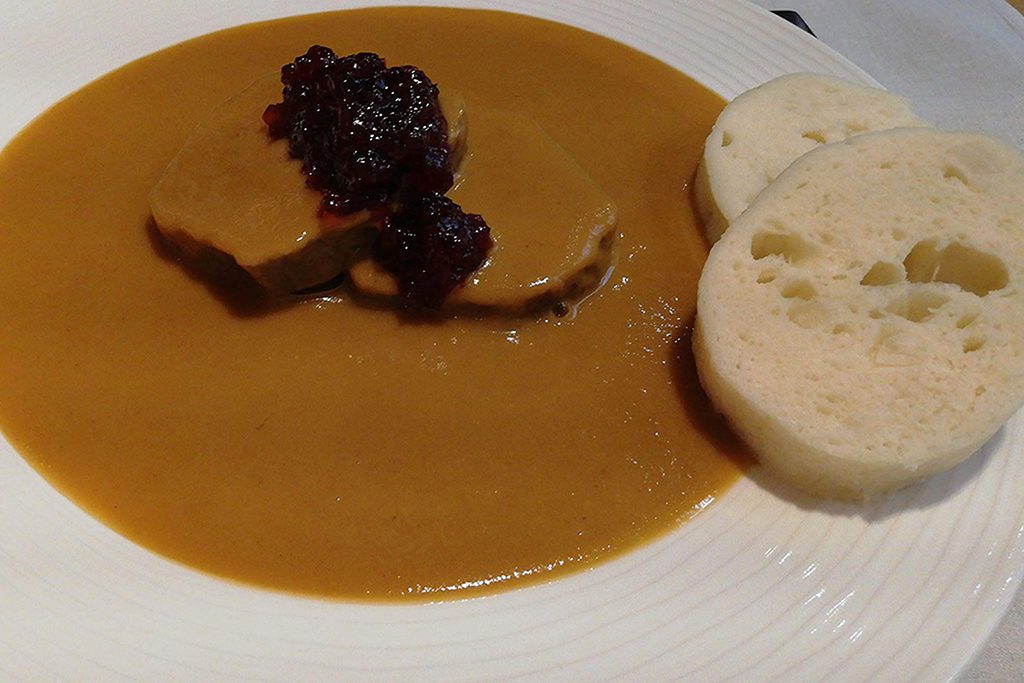
In Bohemian Switzerland, the food reflects this rustic charm. It often features game meats like venison or wild boar, fresh mushrooms from the surrounding forests, and trout from local streams. The region also embraces seasonal ingredients: wild berries in summer, root vegetables in winter.

Overall, Czech cuisine in Bohemian Switzerland is about simple, satisfying dishes made from local produce, offering an authentic taste of the country’s rural heart.
However, I can’t help but point out that vegetarians and vegans won’t really get their money’s worth here. Czech cuisine is generally lacking in vegetables. While salad plates are still reasonably tasty, all the vegetarian dishes
Cash And Cards
Prices in the Czech Republic are generally lower than, for example, in Germany, especially when it comes to traditional restaurants, public transport, and entrance fees. Although the Czech Republic has been a member of the European Union since 2004, they do not pay with €uros but with Czech crowns.
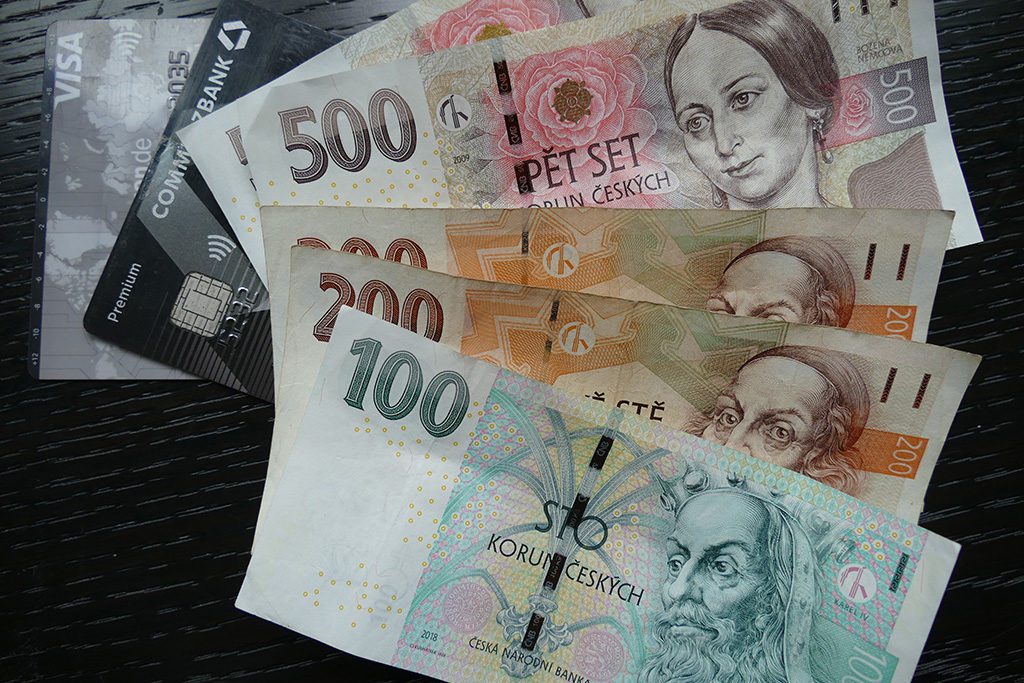
As of May 2025, the exchange rate is 21.94 CZK to one USD, respectively 25 CZK to one €uro. You can check the current rate on this page. Credit cards and contactless payments are accepted almost everywhere, including on buses. And if you actually do have to pay in cash, you can usually do so easily in €uros.
Language And Communication
Czech is an extremely complicated language, both in terms of grammar and, above all, pronunciation. Especially here in the border region with Germany, and due to tourism from the neighboring country, older people tend to speak reasonably good German, while the younger generation is fluent in English.
Since Czech is a Slavic language, those familiar with any other tongue from this family should be able to understand a tiny bit and read many of the signs or writings on goods.
In this guide, I’m writing out some of the Czech names of places, and you will notice that there are accents that might not exist in other languages.
First of all, c is never ever pronounced k! It is pronounced like the ts in Tsar. So it’s Vatslav, neither Vaklav nor Vatchlav.
Only when c is written č, it is pronounced like a ch: Děčín or Česká pošta, Czech Post Office.
The Post Office is also a good example of the letter s. Written š, it’s pronounced sh. But only then.
People tend to overdo it with the ch and the sh. It’s so simple: if there is no accent, it’s a simple c or s, no crackjaw there.
You’ll notice a ´ on many vowels. This tells you to elongate that vowel, like, for instance, in far. So in Tisá, the second vowel is long and the first one is short: Tesah.
I’ll leave it at these few examples and explanations, because all the rules of pronunciation alone would easily take up an entire post. As I said, most people speak a second language and will be happy to try to understand which Czech word you are butchering.
Map
On this map, you can see where to find the most important spots during your stay in Děčín. Clicking on the slider symbol at the top left or the full-screen icon at the top right will display the whole map, including the legend.
Pinnable Pictures
If you choose to pin this post for later, please use one of these pictures:






Did You Enjoy This Post? Then You Might Also Like These:
Best Things to Do in CRETE in One Week
ISLAND HOPPING in the CANARY ISLANDS
LA OROTAVA – Tenerife’s Most Mesmerizing Mountain Town
Guide to AREQUIPA and the COLCA CANYON
Day Trip to GALDAR and PUERTO de las NIEVES – enticement in rocks
FORNALUTX – the Most Delightful Village in the Tramuntana Mountains
Guide to Peru ‘s Five Mountainous Highlights
Guide to the TAMAN NEGARA, Malaysia’s Garden Eden
* This is an affiliate link. Hence, if you book through this page, not only do you get the best deal. I also get a small commission that helps me run this blog. Thank you so much for supporting me!
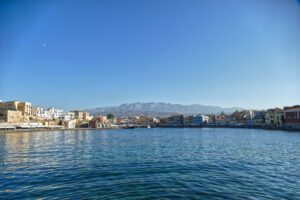
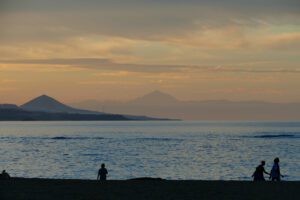

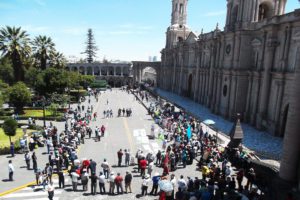
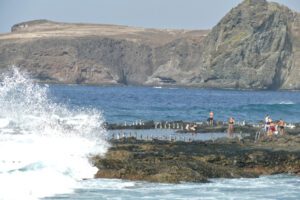

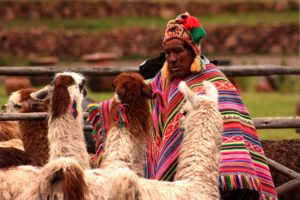
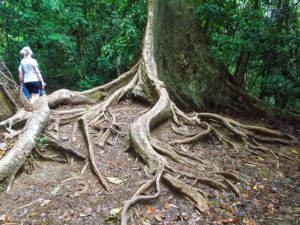
This article made me want to visit Děčín right away! I’d love to sip a coffee at Okr Espresso Bar and watch the climbers pass by with their gear—such a unique vibe. The castle views sound amazing too, especially staying right beneath it. Thanks for sharing such a personal and inspiring look at Bohemian Switzerland!
Thank you for your comment, Agnes. I’m sure you would enjoy Decin as it is surrounded by wonderful nature.
Good to know it is easy to get around without a car! I am curious about the peacock! Are they wild there or do they belong to castle?
I had not heard of this area before. Thanks for putting it on my travel radar!
Yes, it’s truly a hidden gem – even among European travellers 😉 The peacocks belong to the castle – and they like to make some noise 😉 We heard them even in the apartment – which also shows how close to the castle it was located.